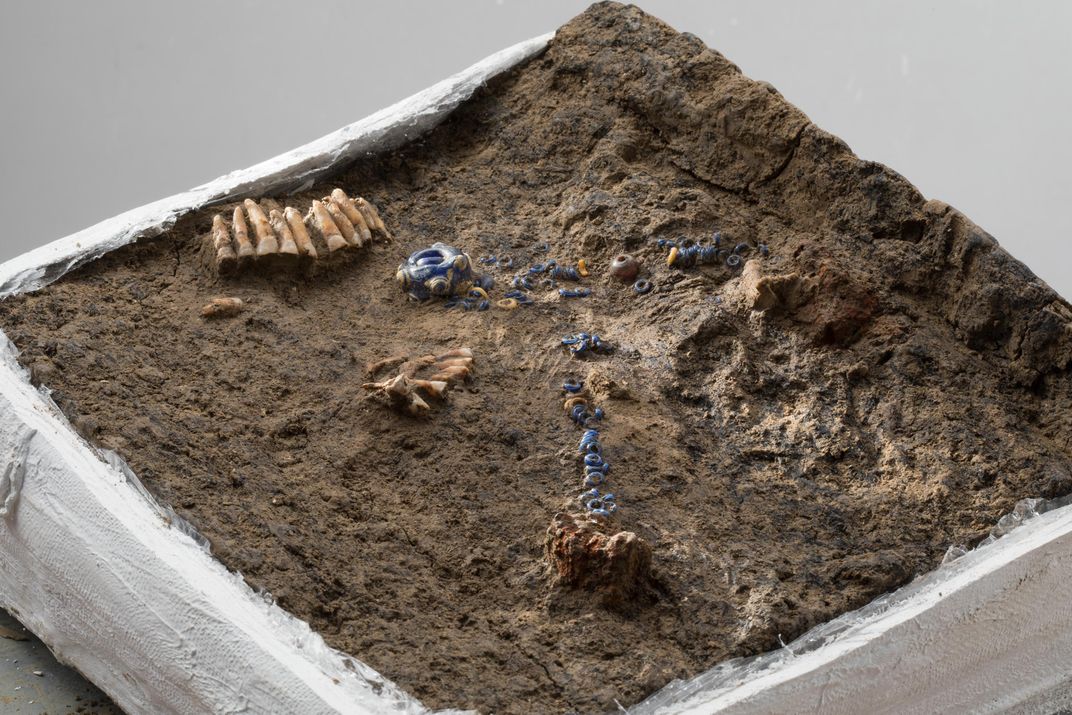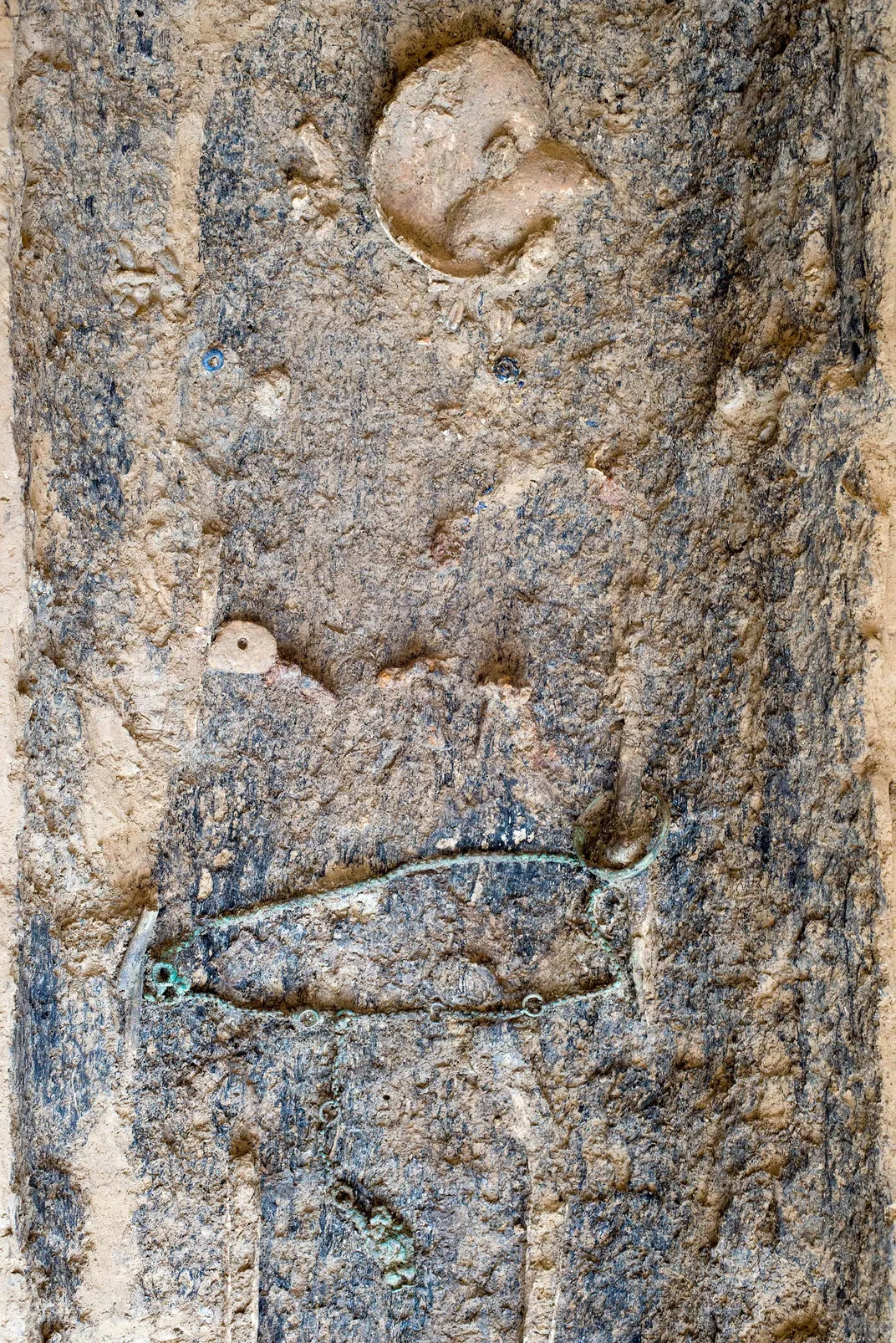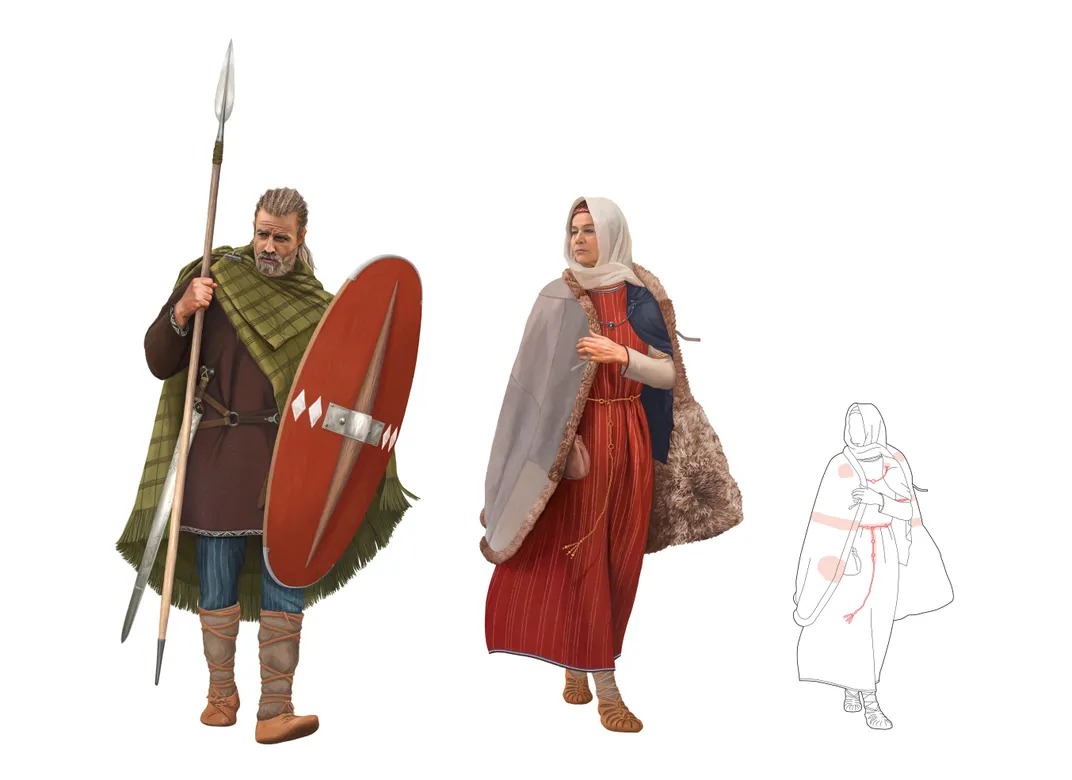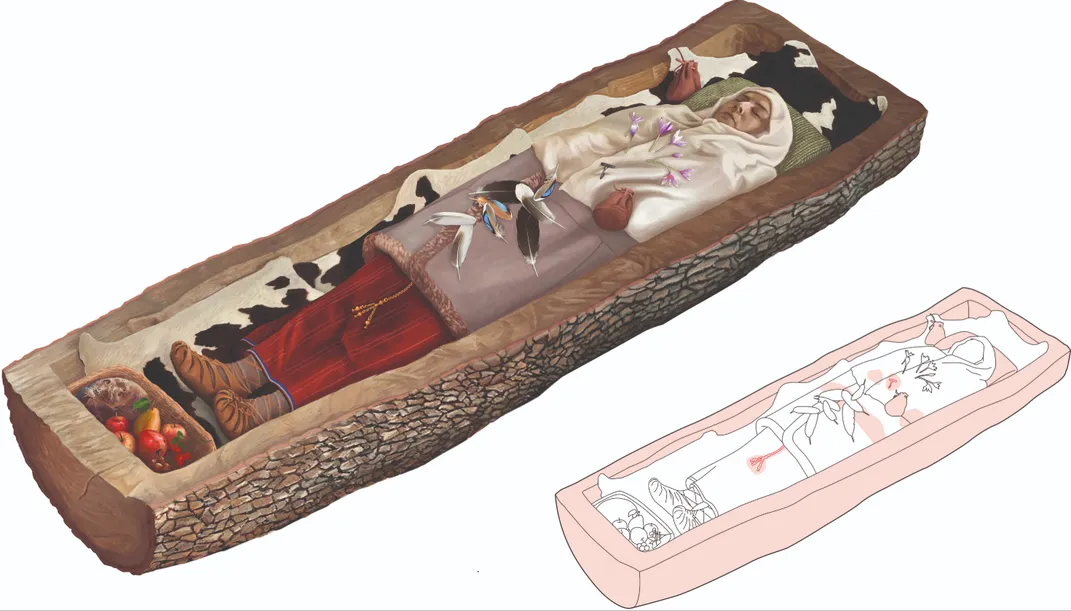Some 2,200 years ago, a group of Iron Age Celts laid a woman to rest in what is now Zürich, Switzerland.
The deceased, clad in a dress of fine sheep’s wool, a shawl and a sheepskin coat, was likely an individual of high stature: As a statement recently released by the city’s Office for Urban Development notes, the woman, roughly 40 years old when she died, boasted accessories including a necklace made of blue and yellow glass and amber, bronze bracelets, and a bronze belt chain decorated with pendants.
Based on analysis of her remains, archaeologists theorize she performed little physical labor during her lifetime and enjoyed a rich diet of starchy and sweetened foods. Curiously, Laura Geggel writes for Live Science, the woman was also buried in a hollowed-out tree trunk that still had bark on its exterior upon the makeshift coffin’s rediscovery in March 2017.

Per a statement published in the immediate aftermath of the find, workers happened upon the gravesite while undertaking a construction project at the Kern school complex in Zürich’s Aussersihl district. Although the site is considered of archaeological importance, most previous discoveries dated to the 6th century A.D.
The only exception, according to Geggel, was the grave of a Celtic male found on the campus in 1903. Like the woman, who was buried about 260 feet away, the man showed signs of high social standing, wielding a sword, shield and lance and wearing a complete warrior outfit. Given the fact that the pair were both buried around 200 B.C., the Office for Urban Development suggests it is “quite possible” they knew each other.

According to the 2017 statement, researchers launched a comprehensive assessment of the grave and its occupant soon after the discovery. For the past two years, archaeologists have documented, salvaged, conserved and evaluated the various goods found in the tomb, as well as conducting a physical examination of the woman’s remains and performing isotope analysis of her bones.

The now-completed assessment “draws a fairly accurate picture of the deceased” and her community, per the statement. Isotope analysis reveals that the woman grew up in what is now Zürich’s Limmat Valley, meaning she was buried in the same region she likely spent most of her life. While archaeologists have previously unearthed evidence of a nearby Celtic settlement dating to the 1st century B.C., the researchers believe that the man and woman actually belonged to a separate smaller settlement yet to be discovered.
Today, the Celts are often associated with the British Isles. In actuality, as Adam H. Graham reports for Afar magazine, Celtic clans spanned much of Europe, settling down in Austria, Switzerland and other areas north of the Roman Empire’s borders. From 450 B.C. to 58 B.C.—exactly the time period in which the tree coffin woman and her potential male companion lived—a “wine-guzzling, gold-designing, poly/bisexual, naked-warrior-battling culture” dubbed La Tène actually served as the nexus of the Celtic world, thriving in Switzerland’s Lac de Neuchâtel region.
Unfortunately for these hedonistic Celts, an invasion by Julius Caesar abrubtly ended the festivities, paving the way for Rome’s eventual subjugation of much of the European continent.
/https://tf-cmsv2-smithsonianmag-media.s3.amazonaws.com/filer/5e/b2/5eb21226-0a7a-42a1-887e-6449d0b60e42/190507_mm_01_ausgrabung_grab_kernschulhaus.jpg)
/https://tf-cmsv2-smithsonianmag-media.s3.amazonaws.com/accounts/headshot/mellon.png)


/https://tf-cmsv2-smithsonianmag-media.s3.amazonaws.com/accounts/headshot/mellon.png)